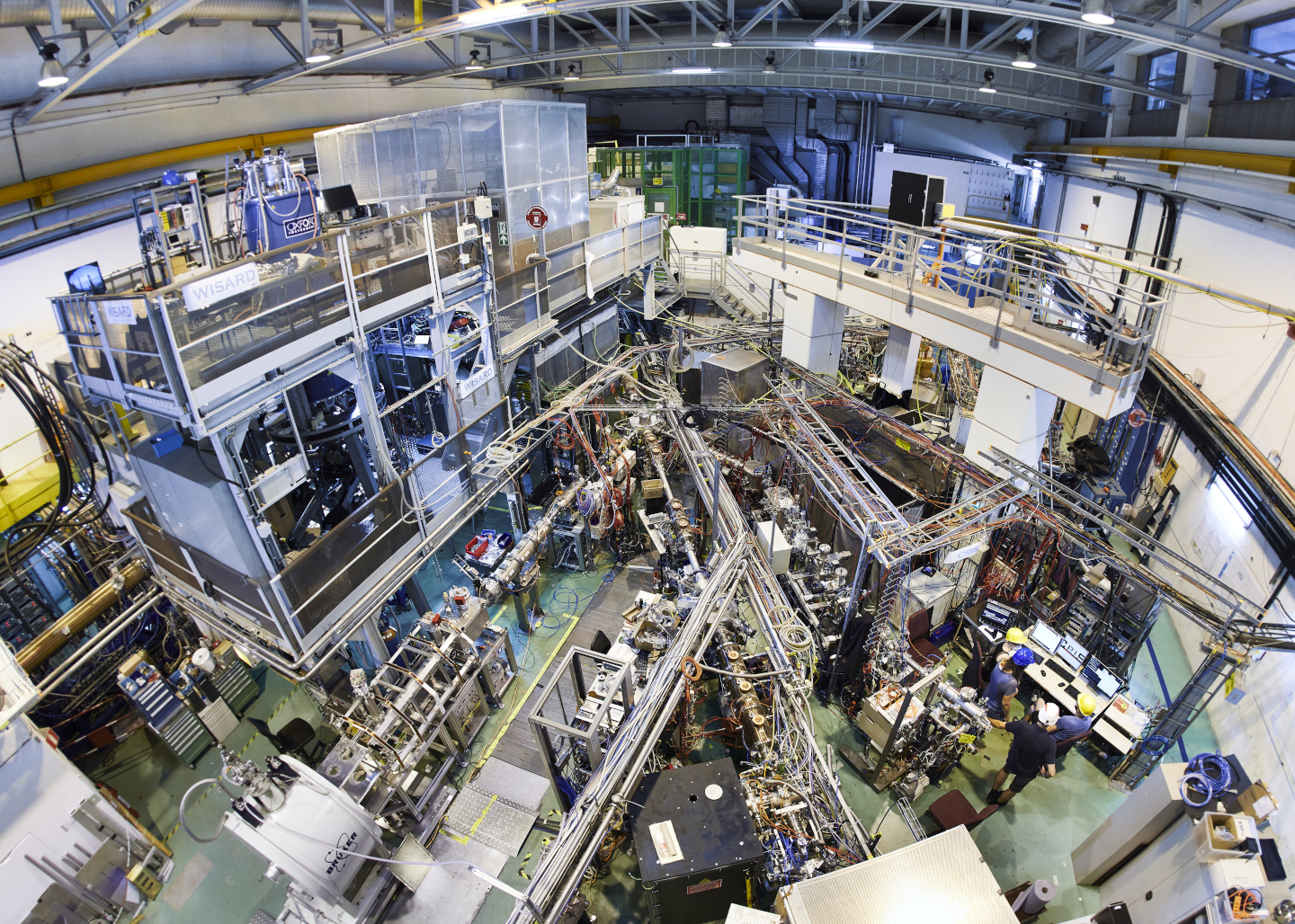
The ISOLDE facility. (Photo: CERN)
Today’s atomic clocks are exceptional timepieces that won’t lose or gain a second in 30 billion years. But if you’re looking for even more precision, you’ll be glad to learn that physicists at CERN’s ISOLDE nuclear physics facility have observed the decay of thorium-229 nuclei trapped in a crystalline structure and confirmed the potential for a nuclear clock. CERN announced the news on May 24.
Measuring time even more precisely could help researchers answer open questions about the fundamental physics of the universe. A nuclear clock based on a periodic transition between two energy states of the Th-229 nucleus “could serve as a sensitive tool with which to search for new phenomena beyond the Standard Model, currently the best description there is of the subatomic world. For instance, it could allow researchers to look for variations over time of fundamental constants of nature and to search for ultralight dark matter,” according to CERN.
Watch and learn: The results of the work were published on May 24 in Nature. In a video released by CERN the same day, lead author and ISOLDE physicist Sandro Kraemer of Ludwig Maximilian University of Munich explains the work and its significance.
“ISOLDE directs a high-energy beam of protons from CERN's proton synchrotron booster into specially developed targets,” Kraemer says. “This generates a large variety of radioactive atomic nuclei. . . . In our experiment, we incorporate actinium-229 nuclei into the crystalline structure of a magnesium fluoride crystal. In the crystal, the actinium-229 nuclei transform into thorium-229 through the emission of an electron. This leaves the thorium-229 nuclei in an excited state, called an isomeric state, that then decays, emitting light that is detected by a spectrometer. This is the transition on which a thorium-229 nuclear clock would be based.
“So why is such a nuclear clock actually interesting?” Kraemer asks rhetorically, before explaining, “Well, if we take this nuclear clock and we compare it to the best available atomic clock we might see a little slight shift in their ticking frequency. And then we might ask, where does this come from? . . . Fundamental constants of nature might not be so constant in time or there might be the presence of ultralight dark matter. With this study, we have actually shown that we can go a big step forward towards the realization of a nuclear clock that can study all these effects.”
More on the method: After producing Th-229 nuclei in the isomeric state through the beta decay of Ac-229 isotopes, the research team investigated the nuclei using vacuum-ultraviolet spectroscopy. They found that the wavelength of the observed light corresponded to an energy of 8.338 electronvolts (eV) with an uncertainty of 0.024 eV. That value is seven times more precise than the best previous measurements, according to CERN.
“ISOLDE is currently one of only two facilities in the world that can produce actinium-229 isotopes,” said Kraemer. “By incorporating these isotopes in calcium fluoride or magnesium fluoride crystals, we produced many more isomeric thorium-229 nuclei and increased our chances of observing their radiative decay.”
A two-decade pursuit: In 2003, German physicists Ekkehard Peik and Christian Tamm first proposed a nuclear clock based on the transition between the ground state of the Th-229 nucleus and the higher-energy isomeric state. In the two decades since, according to CERN, researchers had measured the isomer’s energy with increasing precision.
Now at ISOLDE researchers have observed the photon emitted in the radioactive decay of the isomer to the ground state. That light emission is essential for an optical nuclear clock, and it allows even more precise measurements of the isomer’s energy.
The researchers measured the lifetime of the Th-229 isomer at 16.1 minutes with an uncertainty of 2.5 minutes, which according to CERN confirms theoretical estimates and the potential for a nuclear clock that would be competitive with today’s most precise atomic clocks.
“Solid-state systems such as magnesium fluoride crystals are one of two possible settings in which to build a future thorium-229 nuclear clock,” said team spokesperson Piet Van Duppen. “Our study marks a crucial step in this direction, and it will facilitate the development of the lasers needed to drive the periodic transition that would make such a clock tick.”